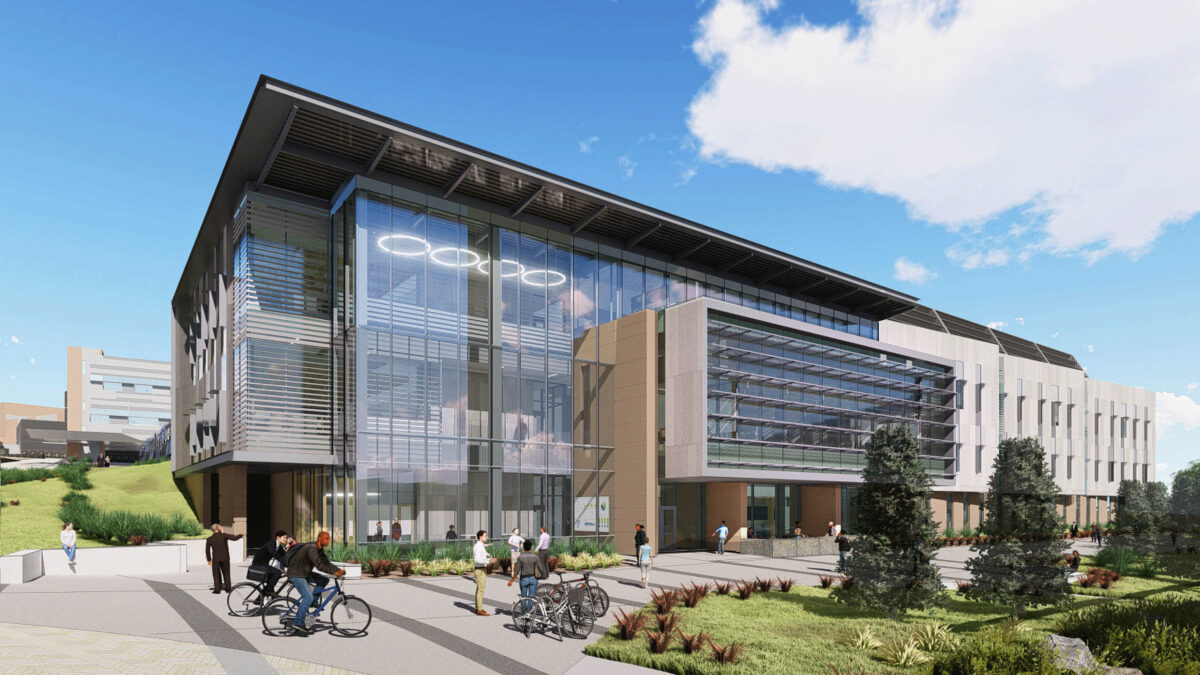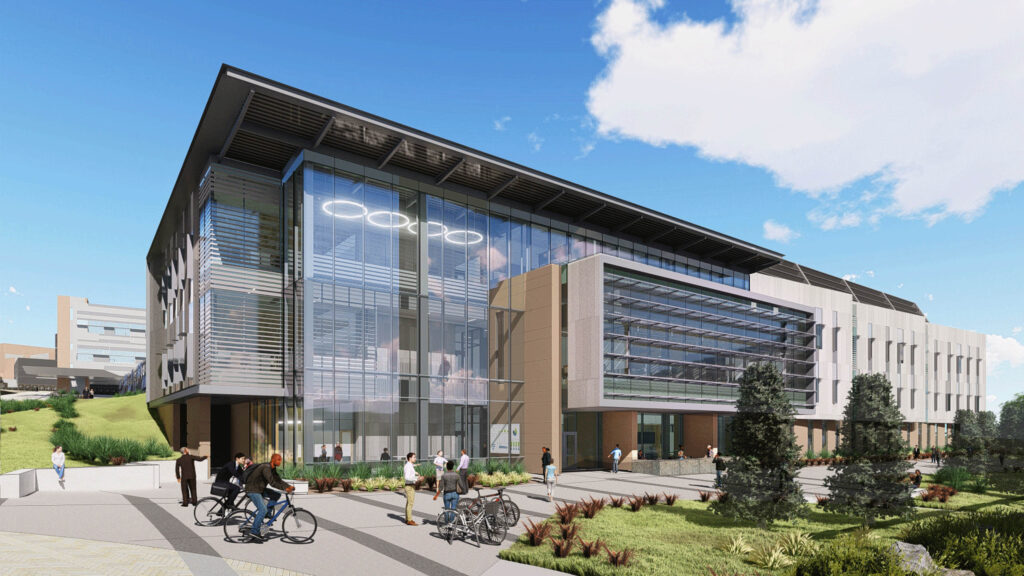NREL’s multidisciplinary research lab will advance scale-up of clean energy products

New facility will enable collaboration with industry partners, universities, other DOE labs to speed process to market-ready products
February 23, 2024 — The U.S. Department of Energy’s (DOE) National Renewable Energy Laboratory (NREL) has chosen JE Dunn Construction with its design partner SmithGroup to design and build a new research facility on the east side of its South Table Mountain Campus in Golden, Colorado. The 127,000-square-foot Energy Materials and Processing at Scale (EMAPS) laboratory will be a signature facility that will enable collaboration with industry partners, universities and other DOE laboratories to accelerate laboratory-scale innovations in energy materials to market-ready products and processes.
We’re excited for another successful partnership with JE Dunn and SmithGroup to design and construct NREL’s next big laboratory. The research that will happen in EMAPS will fill a huge gap in today’s industry of scale-up and adoption of the materials crucial for a clean energy economy.
NREL Director Martin Keller
JE Dunn and SmithGroup previously partnered with NREL 10 years ago to complete the Energy Systems Integration Facility (ESIF), a 180,000-square-foot research building also on NREL’s South Table Mountain Campus directly adjacent to the future site of EMAPS.
Returning to the NREL campus is more than just securing another project; it marks the continuation of a valuable partnership. JE Dunn’s previous work with NREL and SmithGroup on the NREL ESIF project laid the foundation for innovation, and we are eager to embark on this new journey to deliver another transformative facility.
JE Dunn Project Director Charlie Slattery
The EMAPS facility will create a dramatic new gateway to the iconic and picturesque NREL campus. Designed to integrate elegantly into the architectural brand of the campus, and strategically located adjacent to both the Research Support Facility and the Energy Systems Integration Facility, EMAPS creates new physical and functional connections that will advance NREL’s research capabilities.
SmithGroup Design Director Mark Kranz
EMAPS will create a direct path from bench-scale materials and process innovations to pilot-scale integration and production. The laboratory design will facilitate a multidisciplinary approach to materials research and development (R&D) by providing opportunities for engineers, scientists, and industry partners to work together in shared laboratory facilities to greatly accelerate process scale-up and market adoption of the advanced energy materials needed for a clean energy transition. It will serve to maximize collaboration, facilitate cross-functional innovation, and accelerate discoveries to market-relevant technology solutions.
The building’s research capabilities and applications will enable materials and process innovations in energy storage, advanced manufacturing, grid modernization, and net-zero chemicals and fuels for transportation and industrial decarbonization. The facility will also address end-of-life and circularity challenges across multiple energy technology platforms with a focus on polymers, packaging, and waste streams during and after production.
The total budget for the EMAPS project is $224 million. JE Dunn was also selected for a new contracting agreement known as the Cooperative Construction Contracting Approach (CCCA). The CCCA is an overarching contract vehicle that will enable NREL to expedite future construction contracting processes and provide greater contracting efficiency in the coming years on large construction projects. EMAPS will be the first building to be designed and constructed under the CCCA agreement.
EMAPS is intended to achieve a minimum of LEED Gold certification with a sustainable, high-performance design. The incorporation of advanced sustainability strategies and innovative energy efficiency approaches are critical project factors.
Building design is underway with a vision to have modern, open, and flexible spaces that accommodate rapid experiment configuration and collaboration between researchers. The space will be designed with concepts that facilitate reconfigurability and flexibility in research directions as new insights and needs arise.
The project is anticipated to break ground in late 2024.
For an explanation of additional new projects surrounding the EMAPS facility, see “NREL adds lab space with new building, preps other projects.” For more information about NREL Research Facilities, see NREL.
NREL is DOE’s primary national laboratory for renewable energy and energy efficiency research and development. NREL is operated for DOE by the Alliance for Sustainable Energy LLC.

